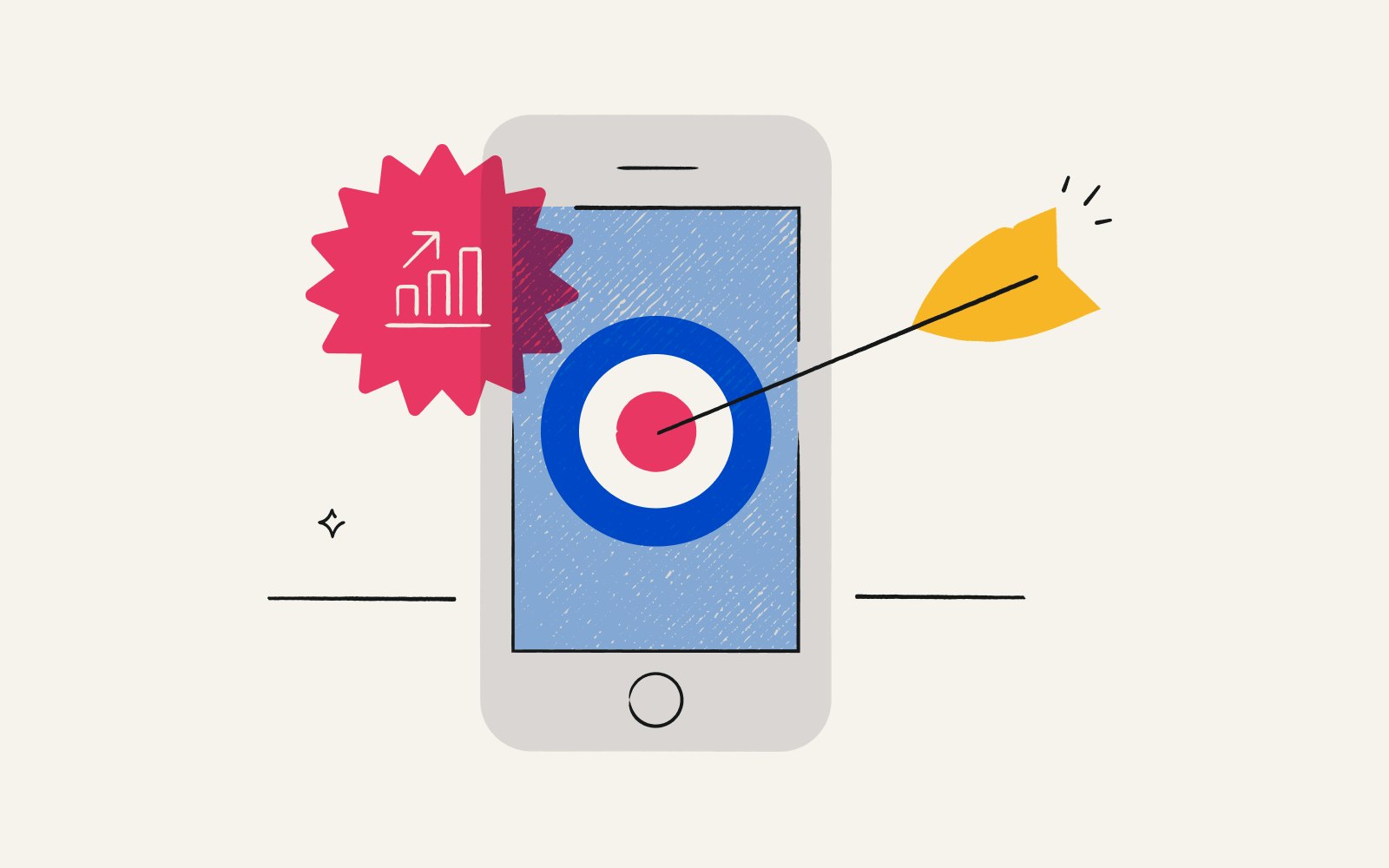5 ways to hyper-personalize your consumer marketing campaigns
By Zach Links●7 min. read●May 23, 2025

Today's consumers expect personalized experiences tailored to their needs, behaviors, and preferences. Marketing teams can create more effective digital experiences and drive better business outcomes with hyper-personalization.
Hyper-personalization uses AI and real-time data to deliver ultra-relevant content to individual customers at the exact right time. This goes way beyond adding {customer first name} to an email subject line — it’s about creating individualized experiences to increase engagement and conversions.
The value of personalized marketing
Personalization has moved from a nice-to-have to a core customer expectation. In fact, according to a SmarterHQ study, 72% of consumers say they’ll only engage with marketing messages tailored to their interests.
Personalized marketing can drive acquisition and retention efforts. According to McKinsey, over three-quarters of consumers said that receiving personalized communications was a key factor in their consideration of a brand. Even more telling, 78% of consumers are more likely to make repeat purchases from companies that deliver personalized communications.
Younger and high-earning consumers particularly value tailored brand communications. Idomoo’s 2025 State of Video Technology report found that 80% of Gen Z and 77% of high-income consumers want more personalization in brand communications. And across demographics, consumers crave customized messaging. One recent survey from PYMNTS and AWS found that 70.8% of US consumers have received personalized offers and are interested in them, and 12.8% have not received personalized offers but are interested.
Personalized experiences can translate to higher engagement, increased conversions, and stronger customer loyalty. As consumer expectations continue to rise, brands are evolving their marketing campaigns and embracing hyper-personalization to stay competitive.
5 ways to hyper-personalize your consumer marketing campaigns
It’s time to move beyond basic personalized marketing campaigns. Here’s how your marketing team can deliver truly hyper-personalized experiences that resonate with customers and drive business results.
1. Use first-party data to tailor messaging by behavior, not just demographics
First-party data — information collected directly from your customers with their consent — builds the foundation for effective hyper-personalization. Unlike demographic segmentation, behavioral data can reveal how customers interact with your brand through browsing patterns, purchase history, email engagement, and customer service interactions.
By analyzing these behaviors, you can identify patterns that indicate specific interests, pain points, or purchase intent. For example, a customer who repeatedly views product tutorials might need more educational content before making a purchase decision. Someone who browses high-end items but only purchases during sales might respond well to exclusive discounts.
Creating behavioral, geographic, and technographic-based customer profiles will enable even more nuanced targeting. Instead of marketing to "men ages 25–35," a hot sauce brand could target “25–35-year-old men who live in urban areas, seek out bold, experimental flavors, spend $20–$40 a month on condiments, and primarily discover new products on TikTok.”
2. Trigger real-time responses based on user activity
Real-time personalization creates immediately relevant experiences by responding to customer actions as they happen. This might include showing related product recommendations based on deep behavioral data, or triggering a chatbot popup when they spend extended time on a support page.
AI and machine learning (ML) have made it possible to analyze customer behavior and trigger appropriate responses instantaneously. The result is a more interactive, responsive experience that feels genuinely attentive to customer needs.
Consumers may get frustrated with generic or inconsistent messaging, but real-time, personalized responses deliver exactly what customers need when they need it, showing that your brand truly gets them.
3. Personalize incentives by customer value or lifecycle stage
Not all customers should receive the same offers. High-value customers, new customers, and loyal advocates each require different incentives to drive desired behaviors. Tailoring your reward strategy based on customer lifetime value and current lifecycle stage yields higher-impact, more cost-effective campaigns.
For newer customers, personalized incentives can drive that crucial second purchase. This could include a time-limited discount on complementary products related to their first purchase, or a digital rebate program that offers a compelling gift card after purchase. The right payouts platform can enable you to send tailored rewards based on customer segments, allowing recipients to choose their preferred reward.
4. Use dynamic content in emails and ads
Dynamic content adapts in real time based on individual user data, delivering unique experiences to each recipient. In email marketing, this means that two customers opening the same campaign might see entirely different products, offers, or messaging based on their preferences and behaviors.
For advertising, dynamic content allows you to adjust creative elements, messaging, and offers based on audience segments or individual user data. A customer who browsed summer dresses might see ads featuring new arrivals in that category, while someone who abandoned a cart with winter boots would see reminders about those specific items.
An AI-powered system like Klayvio can help predict which content variations will perform best for different segments, optimizing campaigns in real time so your hyper-personalization strategy becomes more effective.
5. Create tailored reward campaigns for high-impact moments
High-impact moments — like completing a first purchase or celebrating an anniversary with your brand — deserve special recognition. Tailored reward campaigns for these moments not only acknowledge customer milestones but also reinforce desired behaviors and strengthen emotional connections.
For instance, a customer who reaches a $2,000 spending threshold might receive a $200 prepaid card they can use for everyday purchases, giving them freedom in how they enjoy their reward. Meanwhile, a loyal customer celebrating their second year with your brand could get a tailored discount that aligns with their previous purchases, acknowledging their specific product or brand preferences.
Examples of hyper-personalized marketing
Looking for inspiration? Explore these real-world examples of effective hyper-personalization from leading brands to shape your future campaigns.
The Starbucks mobile app
Starbucks transformed its customer experience through its mobile app, creating one of retail’s most successful examples of hyper-personalization. The app learns from each interaction to create increasingly tailored recommendations and offers. It’s a digital extension of the brand that has become central to Starbucks' customer experience strategy.
The app's sophisticated recommendation engine analyzes purchase history, frequently ordered items, and typical ordering times to suggest items customers are most likely to enjoy. These aren't generic "customers also bought" suggestions, but deeply hyper-personalized recommendations based on individual preferences and behaviors. For example, if you typically order hot drinks in the morning but iced beverages in the afternoon, the app recognizes the pattern and adjusts its suggestions accordingly.
Starbucks also elevates engagement through gamification with personalized challenges tailored to individual purchasing behaviors. Rather than sending the same promotions en masse, the app offers custom challenges and incentives based on ordering patterns and business goals. A customer who regularly purchases breakfast items could be prompted to try a new breakfast sandwich, while someone who typically visits on weekends might get incentivized to make a midweek visit.
The app can also detect when customers are near a Starbucks location and send precisely timed ordering reminders. The contextual awareness sparks moments of delight that feel less like marketing and more like a helpful service. By turning data into personalized recommendations, Starbucks creates a virtuous cycle of engagement that can drive loyalty and increase average order value.
Starbucks customers have been receptive to the increased hyper-personalization. The app now has more than 34 million active members and drives 31% of the coffee giant’s US sales.
The Honda Dream Generator
Honda hyper-personalized its marketing to drive mass awareness for the Prologue, its first all-electric SUV. The Honda Dream Generator asked Amazon users a series of questions to understand their preferences and used those answers to deliver unique AI-generated videos to each viewer.
The campaign represents a significant shift from traditional automotive advertising to interactive storytelling that places the customer in the driver’s seat. It’s also a smart way to collect first-party data. By offering a personalized, engaging piece of content, customers are more likely to share their information than they would with a generic offer.
The videos blend hand-drawn animations and generative AI to create hyper-personalized experiences at scale with a human touch. Instead of one standard video ad, Honda was able to offer 190 personalized story variations. Some customers might see the SUV traversing a prehistoric landscape complete with dinosaurs, while others might see it flying through outer space. This variety ensures that each viewing experience feels unique and personally relevant.
The Dream Generator shows how hyper-personalization can work across multiple touchpoints — desktop computers, smartphones, and Fire TV — meeting customers where they already spend time. Honda’s omnichannel strategy extends the personalized experience beyond a one-time interaction, creating multiple opportunities for engagement.
Honda could have used these fictional landscapes to make a fun commercial or CTV ad. But with hyper-personalization, they created memorable interactive experiences that resonate with individual customers.
Their investment in hyper-personalization paid off. Honda scored 247 million impressions in the first 18 days, $72.5 million in earned media exposure, and a 7.4x increase in campaign awareness.
Best practices for getting started with hyper-personalization
You don’t have to overhaul your entire marketing strategy to incorporate hyper-personalization. Start with a specific customer segment where you have good data and clear objectives. This way, you can test strategies, measure results, and refine your approach before scaling.
Audit your existing customer data for accuracy and recency. Establish processes for ongoing collection and maintenance, ensuring you have quality information to power effective personalization — otherwise, your strategy may fall flat.
Be transparent about data collection and use, giving customers control over their information. It’s about more than staying compliant with privacy laws — 38% of consumers will stop doing business with a brand if they find its personalization efforts “creepy.”
Key takeaways
Hyper-personalization goes beyond basic personalization, using real-time data and AI to create truly individualized customer experiences at scale. As we've seen from the success of Starbucks and Honda, brands that master this approach can improve customer engagement and drive business results. The most effective strategies combine behavioral data, contextual awareness, and perfect timing to deliver helpful experiences.
Start small when implementing your hyper-personalization strategy. Begin with a specific customer segment with quality first-party data and clear objectives, then expand as you validate your approach.
Hyper-personalization is not a one-time initiative: it’s an ongoing process of refinement and optimization. Continue collecting data, testing different approaches, and measuring outcomes to dial in your customer experiences.


